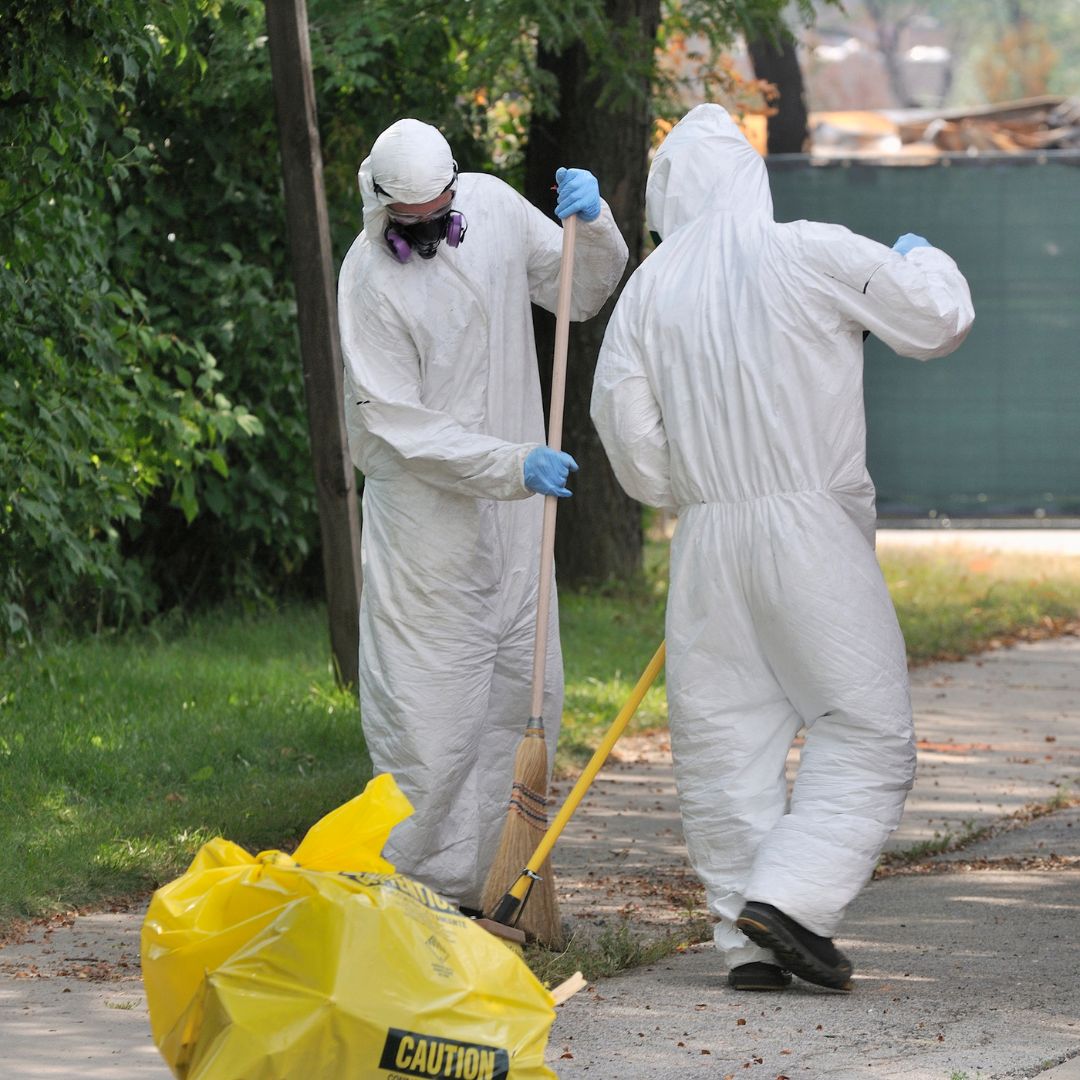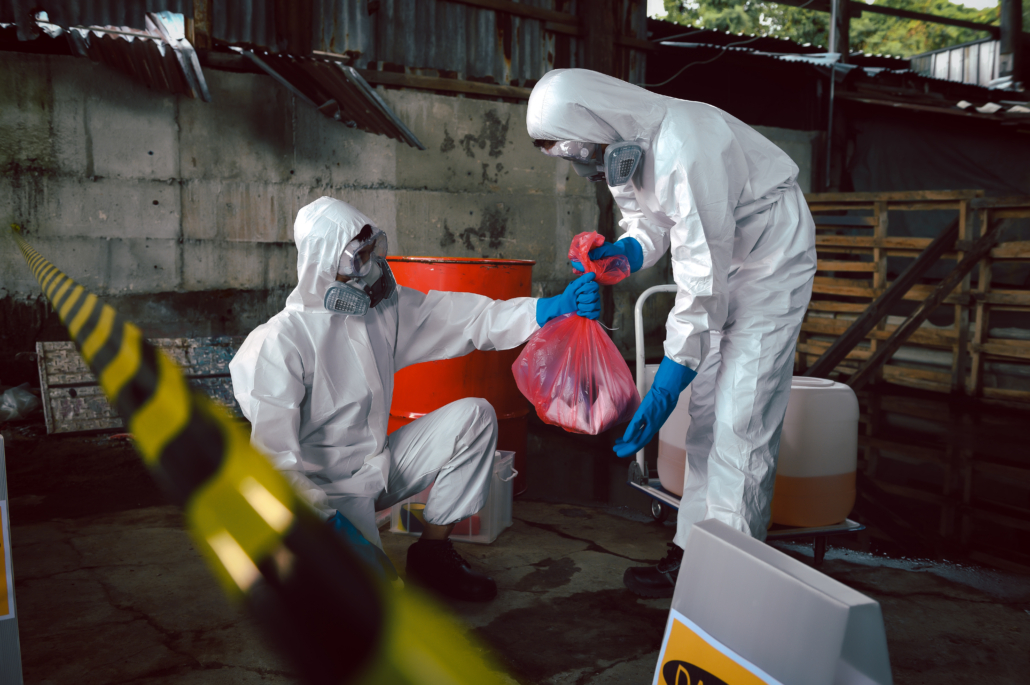Clandestine Lab Cleanup: Comprehensive Purification for Hazardous Sites
Clandestine Lab Cleanup: Comprehensive Purification for Hazardous Sites
Blog Article
Specialist Biohazard Cleansing and Purification for Blood, Bodily Fluids, and Hazardous Products
In the realm of biohazard cleaning and decontamination for blood, physical liquids, and harmful materials, precision and know-how are vital. The prospective health and wellness risks associated with direct exposure to biohazards highlight the vital requirement for meticulous handling and comprehensive cleanup. Specialized training equips specialists with the understanding and skills necessary to resolve these harmful situations effectively. Nevertheless, it is not merely about tidying up; the significance of employing correct decontamination strategies can not be overstated. As we browse the complex landscape of biohazard cleanup, recognizing the subtleties of policies, conformity, and the specific tools at play ends up being important in ensuring a detailed and risk-free purification process.
Health Threats of Biohazard Direct Exposure
Exposure to biohazards positions substantial wellness risks that can result in severe repercussions for people and areas alike. Biohazards incorporate a wide variety of organic materials, including blood, bodily fluids, mold and mildew, microorganisms, infections, and other potentially infectious materials. When individuals enter into contact with these biohazards, whether through mishaps, improper handling, or ecological direct exposure, they deal with the danger of having severe ailments or conditions.
Among the key health and wellness threats connected with biohazard exposure is the transmission of contagious diseases. Bloodborne virus such as HIV, liver disease B and C, and numerous bacteria can be present in biohazardous materials, positioning a straight threat to human health. Inhaling air-borne biohazards like mold and mildew spores or entering contact with contaminated surfaces can additionally bring about breathing problems, allergies, and other damaging wellness impacts.
Additionally, biohazard exposure can have long-term wellness ramifications, with some diseases manifesting years after the first get in touch with (Blood Cleanup). As a result, it is important to prioritize proper biohazard cleansing and purification to reduce these health threats and guarantee the safety of people and neighborhoods

Specialized Educating for Biohazard Cleanup
When it pertains to handling biohazard clean-up successfully and safely, specialized training plays a basic duty in making sure proper decontamination treatments are adhered to. Biohazard cleanup calls for certain knowledge and skills to effectively reduce threats related to bloodborne pathogens, bodily liquids, and unsafe products. Professionals trained in biohazard clean-up undertake strenuous instruction on exactly how to securely manage, get rid of, and deal with biohazardous materials to stop contamination and direct exposure.
Specialized training for biohazard cleaning covers a variety of essential topics, consisting of proper personal protective equipment (PPE) usage, bloodborne pathogen awareness, decontamination techniques, and contaminated materials disposal protocols. Individuals educated in biohazard cleanup are geared up with the required know-how to analyze contamination degrees, determine prospective dangers, and carry out proper clean-up procedures in conformity with regulative requirements.
Continual training and education and learning are vital in the field of biohazard cleaning to remain upgraded on the latest decontamination modern technologies, safety and security procedures, and policies. By buying specialized training, biohazard cleanup specialists can properly react to emergency cleanup click this link situations and safeguard both public wellness and the atmosphere.
Significance of Correct Purification Techniques
Making use of appropriate decontamination strategies is essential in biohazard cleaning to successfully get rid of hazardous products and reduce health threats. Reliable decontamination not just guarantees the elimination of visible traces of blood, physical fluids, and various other biohazards however additionally targets undetectable pathogens that might pose severe wellness risks otherwise appropriately eradicated. By complying with stringent purification methods, trained specialists can substantially reduce the danger of direct exposure to harmful microbes, infections, and germs that can lead to infections or illness.
Correct decontamination methods entail using specific tools and anti-bacterials that are specifically created to counteract biohazards effectively. Complete cleansing and sanitation of infected areas are vital to protect against the spread of pathogens and guarantee a risk-free setting for owners. Additionally, the appropriate disposal of biohazardous waste complying with purification procedures is important in stopping contamination of various other surface areas or people.

Tools and Devices for Safe Cleaning
When dealing with blood, bodily liquids, or dangerous materials, biohazard cleaning experts count on specialized equipment to decrease exposure dangers and extensively decontaminate the damaged area. Furthermore, biohazard cleansing sets having disinfectants, absorptive products, and biohazard bags are used to securely dispose and consist of of contaminated products.
Advanced cleansing devices like hospital-grade disinfectants, HEPA-filtered vacuum cleaners, and misting machines are utilized to sterilize surface areas and remove biohazards successfully. Specialized tools such as sharps containers and biohazard garbage disposal bins are used to safely take care of sharp objects and biohazardous waste materials. By using the ideal tools and devices, biohazard cleaning professionals can make sure a thorough cleanup process that prioritizes security and decreases health risks for both workers and residents of the afflicted area.
Laws and Conformity in Biohazard Cleansing
Appropriate adherence to guidelines and conformity criteria is extremely important in biohazard cleansing to make certain the safety and security of both personnel and the environment. Federal government companies such as OSHA (Occupational Security and Health And Wellness Administration) and the EPA (Environmental Defense Agency) have established specific guidelines for biohazard cleanup procedures to lessen wellness threats and ecological contamination. These laws cover a variety of elements including the handling, transportation, and disposal of biohazardous materials, along with the essential training and safety equipment needed for workers associated with the cleanup crime scene cleanup business for sale process.
Biohazard cleansing business should stay current with these laws to ensure that their operations fulfill the needed safety crime scene cleanup pricing criteria. Failing to abide by these regulations can cause serious consequences, consisting of penalties, lawsuit, and threatening the health of people and the atmosphere. By complying with strict policies and compliance measures, biohazard cleaning companies can properly reduce risks and make certain a safe and thorough cleaning process for all parties included.
Conclusion
Finally, biohazard cleaning and purification require specific training, proper methods, and adherence to regulations. Exposure to blood, physical liquids, and dangerous materials presents considerable wellness dangers, making it crucial to utilize the appropriate tools and tools for risk-free cleaning. By following stringent methods and guidelines, experts can properly mitigate the risks linked with biohazard exposure and guarantee the security of both themselves and others.
As we browse the intricate landscape of biohazard clean-up, comprehending the subtleties of laws, compliance, and the customized tools at play becomes critical in guaranteeing a risk-free and detailed decontamination process. (Blood Cleanup)
When it comes to managing biohazard cleaning successfully and securely, specialized training plays a basic duty in making certain proper decontamination procedures are followed.Utilizing proper decontamination techniques is essential in biohazard clean-up to efficiently get rid of dangerous materials and reduce health and wellness dangers. Furthermore, biohazard cleaning kits containing anti-bacterials, absorbing products, and biohazard bags are utilized to safely contain and dispose of infected products.
Government agencies such as OSHA (Occupational Safety and Wellness Management) and the EPA (Environmental Security Agency) have actually developed particular guidelines for biohazard cleaning procedures to reduce health threats and ecological contamination.
Report this page